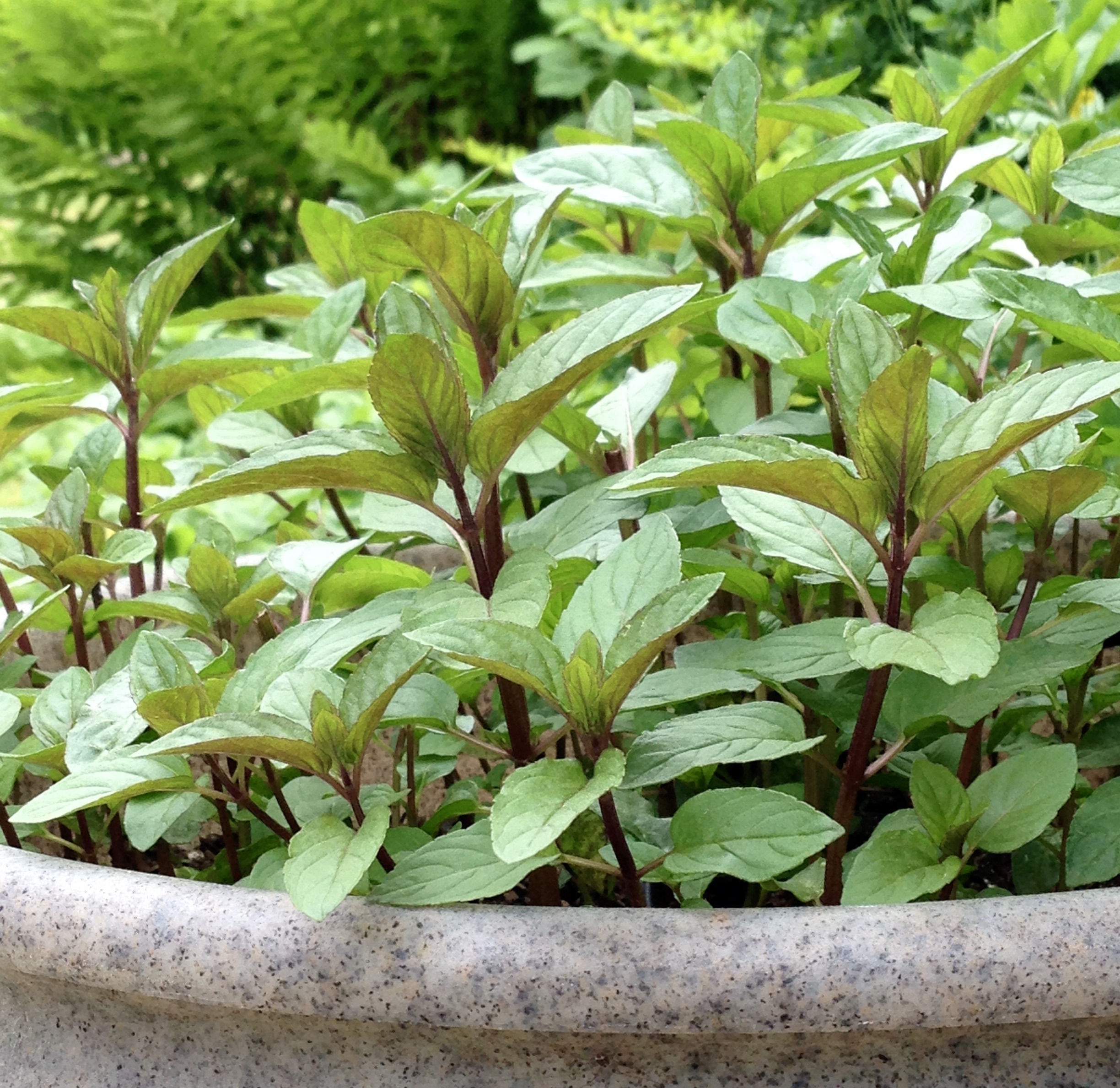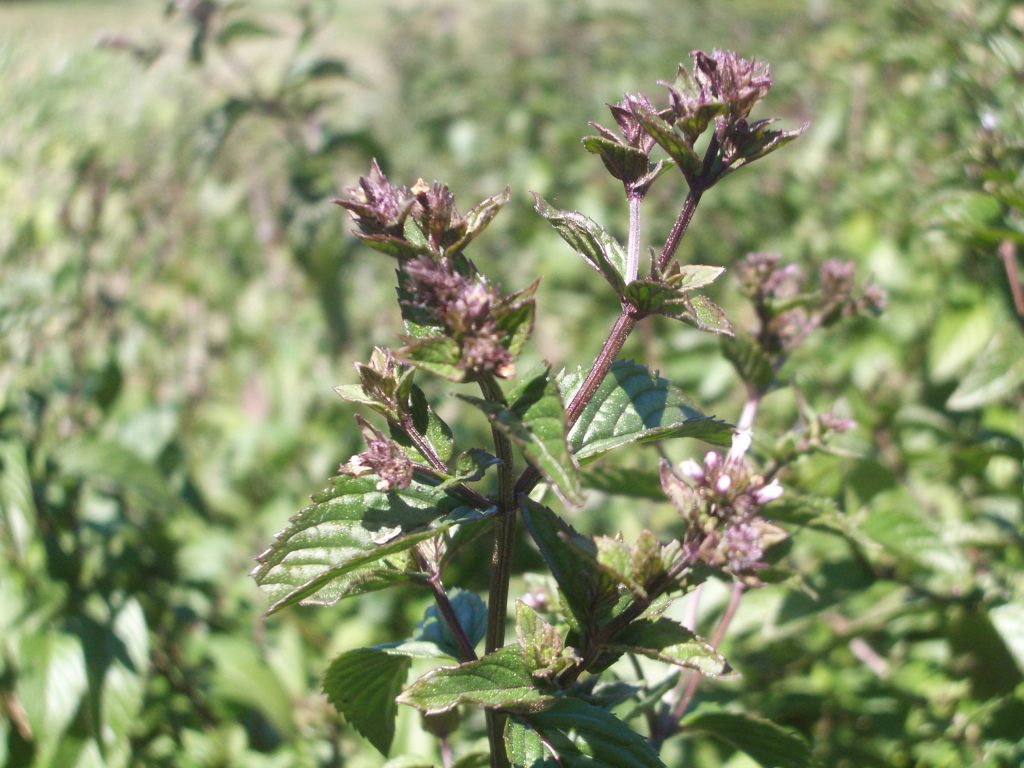Student Monograph ~
This Materia Medica assignment was written by Meagan Rousseau for the Home Herbalist Series.
Peppermint
Latin Name: Mentha x piperita (1)
Part(s) Used: leaves (1) crude as well as in a concentrated, potent essential oil (1)
Key Actions: antispasmodic (1), antimicrobial (2), analgesic (2), carminative (2), aromatic (4), stimulating nervine (4), nootropic (1), stimulating diaphoretic (4), decongestant (1)
Medicinal Uses:
Carminative & Antispasmodic -
The leaves are rich in menthol which act as a potent antispasmodic and can help with gas, indigestion, pain and IBS (when using the oil, tea is much milder) (1, 3)
The oil (diluted with olive oil) can also offer help with pain, gas and IBS when applied topically on the stomach (1, 3) and can also relieve intestinal spasms (3)
Carminative - It is great for the digestive system as whole, as it increases the flow of digestive juices and bile and relaxes the gut muscles (2)
Decongestant - It can clear the sinuses, relieve coughs, headaches and aid with nausea, particularly morning sickness (1)
Analgesic & Antispasmodic - When applied topically it can act as an analgesic and reduce pain in headaches, decreases tension and relaxes muscles (3)
Decongestant - When used as an herbal steam, it can help break up congestion in the lungs (4)
Carminative - Can be helpful in tea form as a therapy for colic in infants (3)
When added to toothpaste, it can be helpful (in addition to other herbs) when addressing gingivitis (3)
Mildly Antimicrobial - The volatile oils have been shown to have antifungal action (3)
Cooling & Analgesic - The oil is cooling and can help to relieve burning pain and itch from inflammation, from poison oak/ivy, sunburns and hives (3, 4)
Antispasmodic and Analgesic - May be helpful with menstrual cramps or sore backs (4)
Nootropic & Stimulating - Promotes alertness and temporary energy (4)
Diaphoretic - Helps address fevers that result from the flu by opening the pores of the body and allowing the heat to escape (4)
Other Uses:
Nutritive - Peppermint offers valuable nutrients such as calcium, magnesium and potassium (4)
It is helpful for refreshing your breath, flavoring many toothpastes, mouthwashes, and breath mints (4)
Peppermint tea may be helpful with the hiccups (4)
Cautions:
Peppermint can often aggravate reflux (1)
The essential oil should always be diluted for topical use and should only be used internally if specially prepared. The crude herb is safer internally and often potent enough. (1)
People with gallstones should consult a doctor before using the leaf or oil (3)
The essential oil should not be applied to the face (3)
Caution should be used with infants and children as they could choke as a reaction to the strong menthol (3)
The essential oil can cause burning and gastrointestinal upset in certain people (3)
When taken in excess, it could potentially dry up breast milk. (4)
While culinary amounts of the crude herb are likely safe, use caution and seek guidance before using therapeutic doses or the essential oil during pregnancy. (1)
Click here for more on essential oil potency and safety.
Sources:
- 1. Groves, Maria, Body into Balance, 2016.
- 2. Chevallier, Andrew, Encyclopedia of Herbal Medicine, 2016
- 3. Aisle 7/HealthNotes, web, http://publix.aisle7.net/publix/us/assets/landing-page/publix-healthy-living/~default, http://publix.aisle7.net/publix/us/assets/nutritional-supplement/peppermint/~default
- 4. Rosalee De La Foret. Herbs with Rosalee, Web, herbalremediesadvice.org https://www.herbalremediesadvice.org/peppermint-health-benefits.html
Meagan Rousseau is currently enrolled at Wintergreen Botanicals in the Home Herbalist series and is eager to further her herbalist knowledge! After spending several years dealing with different health issues, she started learning about alternative health and wellness avenues and was astonished at the healing power of herbs and natural remedies. She has a bachelor’s degree in Communications from the University of New Hampshire and is currently the Assistant Controller for Al Terry Plumbing and Heating. In her free time, she enjoys spending time with her husband, Corey, and her Westie, Ruger. She also loves to travel and enjoys reading.
Peppermint photos by Maria Noël Groves
The statements made on this blog have not been evaluated by the FDA and are not intended to diagnose, prescribe, recommend, treat, cure, or offer medical advice. Please see your health care practitioner for help regarding choices and to avoid herb-drug interactions.



